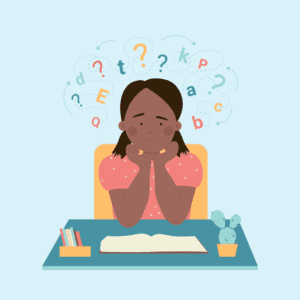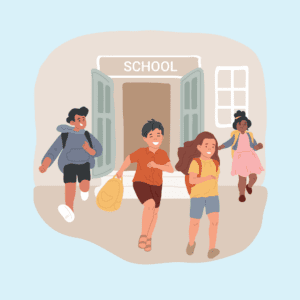We asked Stephanie of School Counselor Stephanie and Brandy of The Counseling Teacher to share how they introduce the school counselor's role each year. Stephanie discusses how she communicates with students at the beginning of the year. Brandy shares how she explains her program to faculty and staff during the back to school season. Share your approach in the comments below.
Introduce the School Counselor's Role to Students
There is so much to do at the beginning of the school year! This is definitely the time of year to prioritize school counseling tasks since there are only so many hours in the day. One of your top priorities as a school counselor during Back to School season is to introduce yourself and introduce the school counselor's role to students.
There are three main ways to do this.
Introduce Yourself
First, give a brief introduction of yourself to students during the opening week of school, preferably on day one or two. This is important because some of them will need you before they know you! You can do this by taking just 5-10 minutes to talk to the entire grade level during lunchtime or even hit all the classes in a quick rotation first thing in the morning.
At my school, my admin team talks to all grade levels the first week to set consistent behavior and academic expectations for the entire campus. My co-counselor and I join in this talk, giving us an easy way to speak to the entire student body. During your brief introduction, address three points:
- Your name, physical office or classroom location, and grade level or alpha assignment
- A sentence or two about how you support students
- How students should get to you if they have an emergency (i.e., someone threatens them) versus a non-emergency (i.e., schedule change request).
First Guidance Lesson
Second, plan your first guidance lesson to teach students exactly what your role is in the school and how you can support them. This may come in the form of a Meet the Counselor interactive activity if you work with littles, or a Meet the Counselor PowerPoint in the computer lab with a Kahoot follow-up if you work with the older kids.
I create a Meet the Counselor Booklet that I give to each student as a part of my Meet the Counselor September guidance lesson. We discuss each part of the booklet together in the lesson. You can check out this Meet the Counselor guidance lesson with the accompanying booklet here.
I briefly explain the four aspects of school counseling (guidance curriculum, responsive services, individual planning, and system support) in terms or with activities that they can understand. Then, I explain how I support them in each aspect. During this lesson, I also give them a needs assessment to see what topics they want me to cover in their guidance lessons throughout the year.
I explain to them that one of my roles is to help them discover ways to learn more about whatever they are most interested in. Here is a link to my website resources page where you can download this student needs assessment.
Be Visible
Third, spend some time in the cafeteria during lunches in the first month of school. At my school, we run a “Counselor Corner” all year long where each counselor takes a day of the week to sit through all three lunch shifts. This gives students a great opportunity to informally come up and chat with us about whatever is on their mind.

Doing these activities to introduce the school counselor's role to students will pay off in spades when they have a problem and they know exactly how to get help from you!
Introduce the School Counselor's Role to Staff
Teachers are so focused on getting their rooms ready for the school year that I find it difficult to keep their attention at the very beginning of the year. Therefore, we do a quick intro at the first faculty meeting and leave the formal introduction for later. We send them with a FAQ sheet and student referral forms. After teachers have had a few weeks to settle in, we will do a detailed powerpoint presentation explaining our role to staff in more detail.

What is the School Counselor's Role?
The answer to this question can vary quite a bit depending on your school, your district, or state. It's important to be sure that administrators and teachers know your specific role as defined by the American School Counseling Association from the very beginning, so that you do not find yourself becoming the disciplinarian, substitute teacher, or hallway monitor.
Because our role with students is to be their advocate and to develop an authentic, trusting relationship with them, we don't want to jeopardize that by being seen as the disciplinarian. The teachers and admin are supposed to be the first line of defense in discipline. Counselors are more like the grandparents of the school.
We are there to nurture, protect, help modify behavior, and give treats when needed. We try very hard at the beginning of the year to make it clear that students are never "in trouble" if they get called to the counselors' office. We are there to solve problems and help students become the best version of themselves. We want all visitors to our office to feel unconditional acceptance. This becomes critical when students need an adult in the school that they know they can trust if they are self harming or having negative thought processes.
Referrals
We give out referral forms to all staff with a list of reasons that are appropriate for sending a student to the counseling office. Not that they always remember to use it, but we try. This form acts as a guide and a reminder of the reasons why a student may need to see us. It also has a reminder that we are not the first course of action for discipline.
You can come up with any process for your school, but we prefer a form that teachers fill out ahead of time. If they forget and come charging into the office with a student, we will usually talk to the student if we are able and put the form in the teacher's box later as a reminder. The form is then filed away in the student's counseling file.
We also remind teachers that in our state, we are allowed to see students only one time without parent permission, so it is critical that we follow procedure. In my last school, we sent home a parent permission form to every student at the beginning of the school year. At my current school, we only send the form home after an initial referral from a teacher, peer, or the student. Check with your state for specific laws.
Research Based Program
Getting support for your program can be just as easy as 1, 2... data. The numbers will tell the story. Turn your program goals and statistics into colorful graphs and tables to show your school leaders and staff why you do what you do. While I'm not opposed to covering a classroom when needed, we all know that it's not the best use of our time. Once stakeholders realize that our methodology makes a real impact on student personal and academic growth, you will find that others begin to value your time more and more.
Let us know how you introduce your program to students and staff!
Other Helpful Posts










